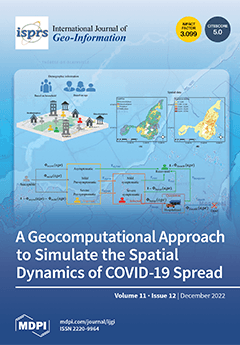One hundred seventeen landslides occurred in Malang Regency throughout 2021, triggering the need for practical hazard assessments to strengthen the disaster mitigation process. In terms of providing a solution for investigating the location of landslides more precisely, this research aims to compare machine
[...] Read more.
One hundred seventeen landslides occurred in Malang Regency throughout 2021, triggering the need for practical hazard assessments to strengthen the disaster mitigation process. In terms of providing a solution for investigating the location of landslides more precisely, this research aims to compare machine learning algorithms to produce an accurate landslide susceptibility model. This research applies three machine learning algorithms composed of RF (random forest), NB (naïve Bayes), and KNN (k-nearest neighbor) and 12 conditioning factors. The conditioning factors consist of slope, elevation, aspect, NDVI, geological type, soil type, distance from the fault, distance from the river, river density, TWI, land cover, and annual rainfall. This research performs seven models over three ratios between the training and testing dataset encompassing 50:50, 60:40, and 70:30 for KNN and NB algorithms and 70:30 for the RF algorithm. This research measures the performance of each model using eight parameters (ROC, AUC, ACC, SN, SP, BA, GM, CK, and MCC). The results indicate that RF 70:30 generates the best performance, witnessed by the evaluation parameters ACC (0.884), SN (0.765), GM (0.863), BA (0.857), CK (0.749), MCC (0.876), and AUC (0.943). Overall, seven models have reasonably good accuracy, ranging between 0.806 and 0.884. Furthermore, based on the best model, the study area is dominated by high susceptibility with an area coverage of 51%, which occurs in the areas with high slopes. This research is expected to improve the quality of landslide susceptibility maps in the study area as a foundation for mitigation planning. Furthermore, it can provide recommendations for further research in splitting ratio scenarios between training and testing data.
Full article





